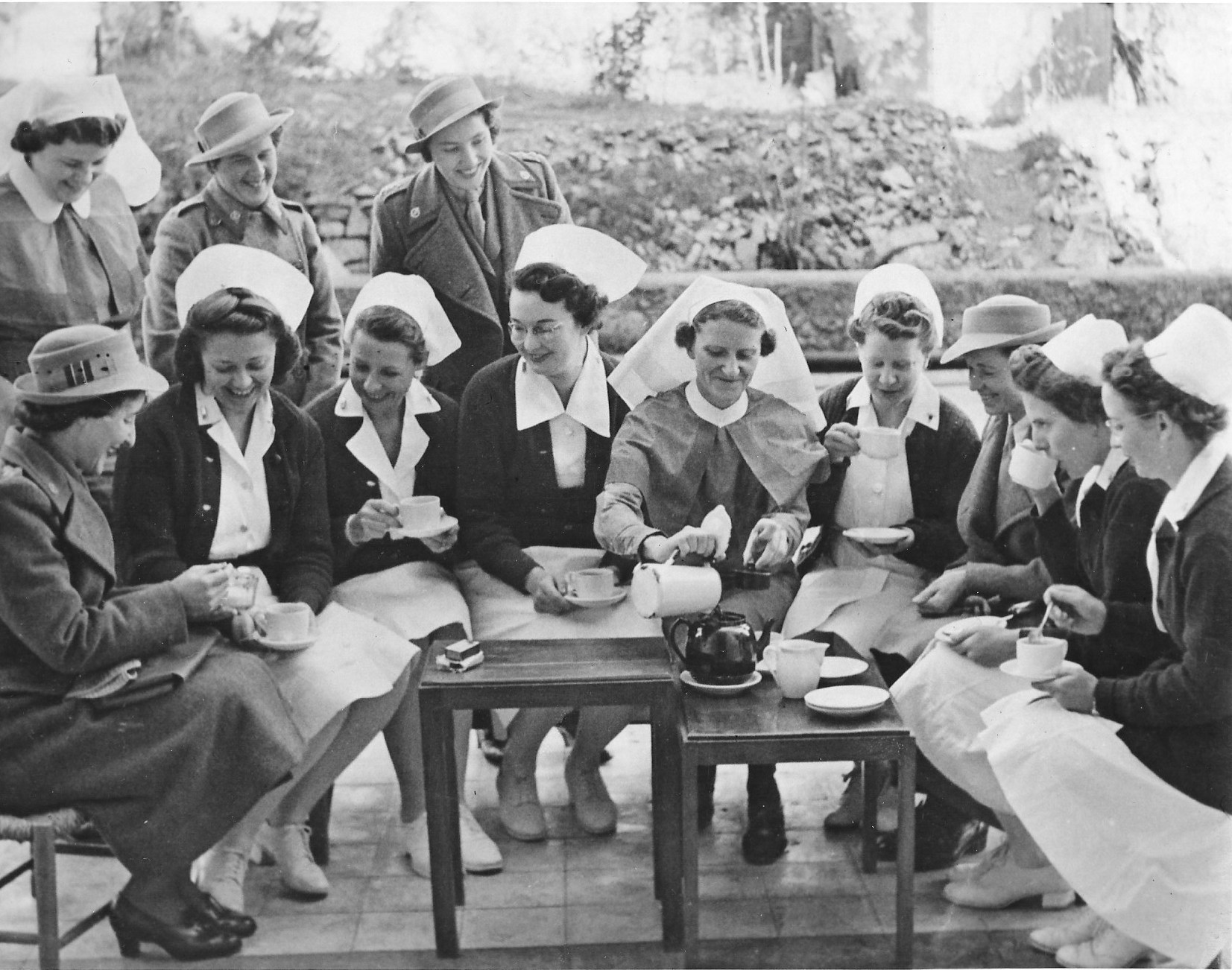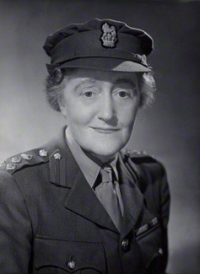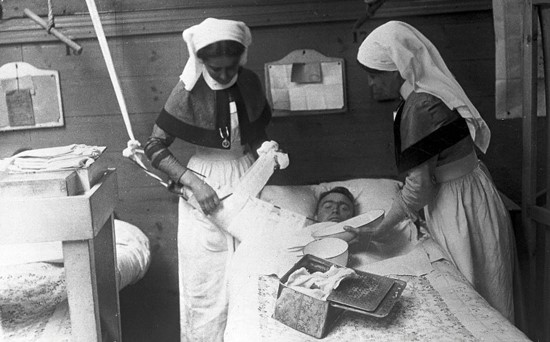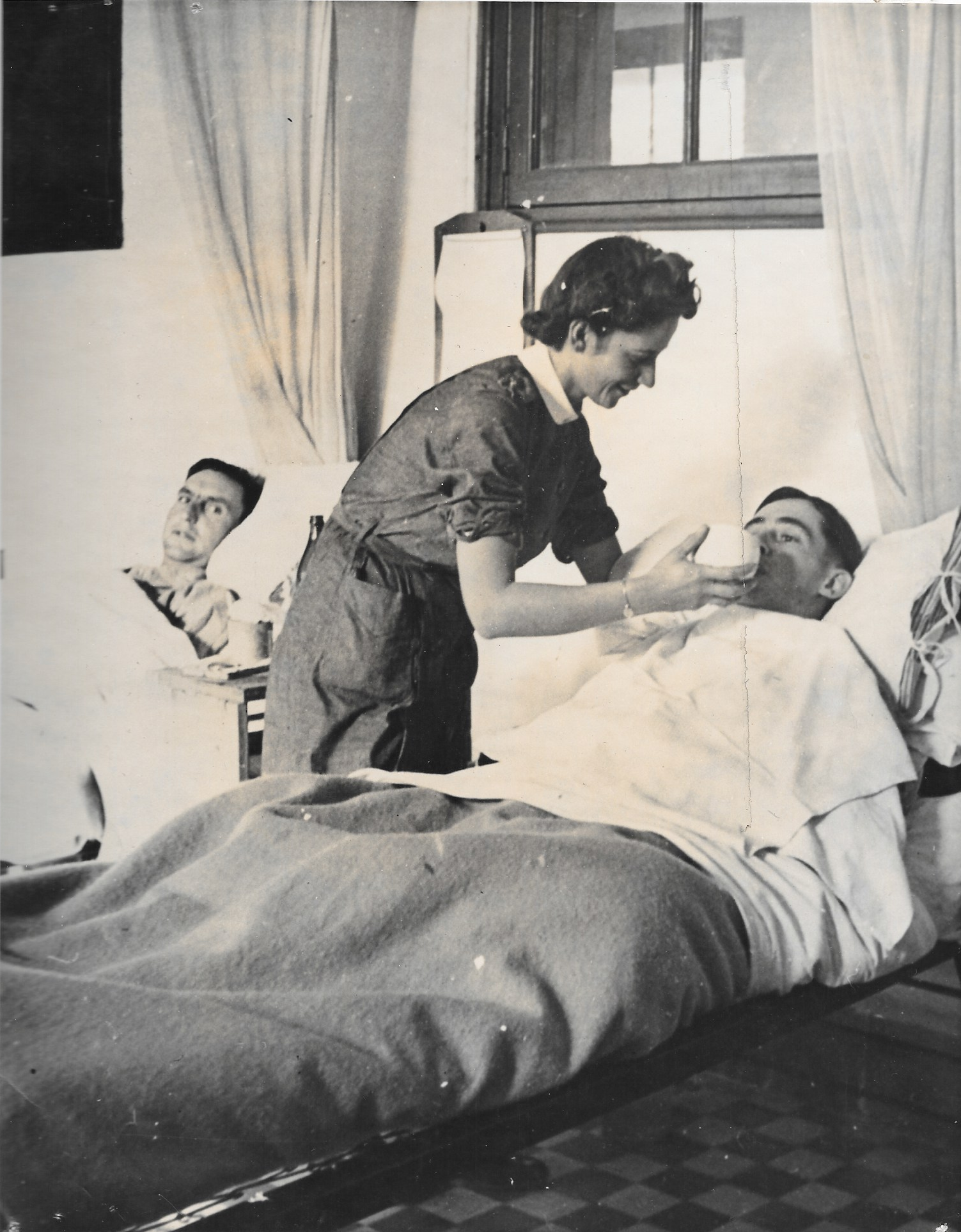
HISTORY OF THE QARANC ASSOCIATION
 The Association was founded in 1947 by Dame Louisa Wilkinson DBE RRC as the Queen Alexandra’s Imperial Military Nursing Service (QAIMNS) Association, changing its name when the Queen Alexandra’s Royal Army Nursing Corps (QARANC) came into being.
The Association was founded in 1947 by Dame Louisa Wilkinson DBE RRC as the Queen Alexandra’s Imperial Military Nursing Service (QAIMNS) Association, changing its name when the Queen Alexandra’s Royal Army Nursing Corps (QARANC) came into being.
The Association was able to support the many thousands of members of the QAIMNS who were leaving the Service after the Second World War, having shared experiences their civilian colleagues would not have done. This continues today through the Headquarters and branches countrywide.
History of Army Nursing
Although a formal military nursing service did not exist in the army prior to the late 19th century, nursing care was provided to the army during the reign of Elizabeth I (1558-1603) and the English Civil War and Interregnum (1642-1660) when Parliament employed nurses at the three military hospitals in London. During the 18th century, Matrons and nurses worked in military hospitals but the training and level of care were not of a high standard, this was not unique to military hospitals but typical of healthcare at the time.
Crimean War

The widespread reporting of conditions in army hospitals during the Crimean War generated a public alarm and subsequent demand for nurses to go to the Crimea and tend to the sick soldiers. Sidney Herbert, Secretary of State for War, wrote to Florence Nightingale asking her if she would organise a party of nurses to take to the Crimea and superintend the nursing in Scutari. Florence Nightingale was a fantastic administrator and dedicated nurse and her work in the Crimea is still remembered today. She dramatically improved conditions within the hospital at Scutari, where the majority of soldiers had been dying from disease rather than battle injuries. Her efforts in elevating the status of nursing continued after the war, she wrote copiously setting standards of care on hospital administration.
Nightingale remained very interested in Army nursing and during the period after the Crimean War wrote three important texts including, “Subsidiary notes as to the Introduction of Female Nurses into Military Hospitals in Peace and War.” She also drafted the section on, “the duties of officers, Attendants and Nurses” in the War Office draft regulations for Military Hospitals.
Late 19th Century

The Army Nursing Service was formed in 1881 and nurses accompanied the army on campaigns in Egypt and Sudan. In 1887 Princess Christian, Queen Victoria's daughter, gave her name to the Army Nursing Service Reserve and the Princess Christian's Army Nursing Service Reserve served with the British Army during the Anglo-Boer War.
The force that went to South Africa was the largest ever sent abroad and nurses were desperately needed.
Formation of Queen Alexandra’s Imperial Military Nursing Service

On 27th March 1902, Queen Alexandra became the President of the newly formed Queen Alexandra's Imperial Military Nursing Service (QAIMNS). Queen Alexandra was a Danish princess before she married King Edward VII and because of that, she chose the cross of the Order of Dannebrog as the basis of the badge of the QAIMNS.
The motto, Sub Cruce Candida, (Under the White Cross), was adopted at this time.
World War 1

At the outbreak of war in 1914 there were just under 300 nurses in the QAIMNS, by the end of the war this had risen to 10,404 (including reservists). The nurses were well trained but the increasing mechanisation of war brought some horrific new injuries, including wounds caused by shrapnel, land mines, mortars, grenades, tanks, flame throwers and gas attacks. Army nurses served in Flanders, the Mediterranean, the Balkans, the Middle East and onboard hospital ships.
Almost 200 army nurses died on active service and in 1916 when the Military Medal was instituted as an award for bravery, some of the first awards went to military nurses.
World War 2

With the outbreak of World War 2, nurses once again found themselves serving all over the world, including Norway, Iceland, Greece, Ceylon and South Africa. The changing working conditions and wartime shortages led to changes in uniform. Khaki slacks and battledress blouses replaced the grey and scarlet ward dress and rank insignia was adopted to signify the official status of the nurses.
In the Far East, the fall of Hong Kong and Singapore led to many army nurses being captured by the Japanese and enduring the terrible hardships and deprivations of the Far East prisoner-of-war camps.
1945 onwards
At the end of the war, the Army Medical Services underwent further reorganisation and on 1st February 1949, the QAIMNS became the Queen Alexandra's Royal Army Nursing Corps (QARANC). In July 1950 the first non-commissioned ranks were admitted to the Corps and in 1954 the first nurses to undertake State Registered Nurse training within the Corps successfully passed their examinations.
However, the QARANC was still an all-female organisation as male nurses were members of the RAMC and it was not until April 1992 that male nurses transferred to the QARANC and female non-nursing trades transferred from the QARANC to the RAMC and RADC. (Male nurses had briefly been admitted in 1904 and wore a bronze version of the QAIMNS cape badge.)
With the expansion of the Corps, following World War Two, QAs served in the Far East, Germany, Jamaica, Bermuda, West and East Africa and the Middle East. QAs were stationed in Hong Kong in 1950 to treat casualties from the Korean War and also served in Malaya, Singapore and Borneo during the 1950s and 1960s. QAs landed at the Falkland Islands shortly after the war in 1982 to care for the sick and wounded, although the lack of accommodation meant nurses had to remain on board the ship for two months. Large numbers of QAs have served in Iraq, Kuwait, Bosnia and Afghanistan and continue to serve on Operations abroad.
Researching Army Nursing and Army Nurses
You can find out more about the history of Army nursing on our
Heritage site The Heritage site also has information on how to research Army nurses and a contact form if you need help with this. It is also home to the QARANC Association Gazette archive which you can search for information.